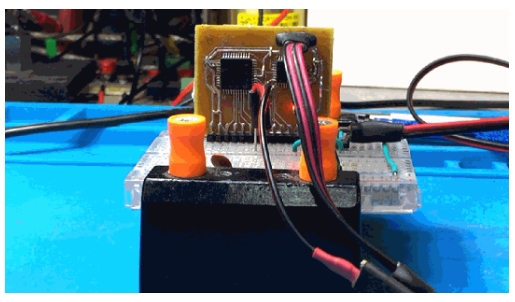Analog switch matrices play a pivotal role in various electronic systems by facilitating signal routing and switching. Understanding their working voltage and switch characteristics is fundamental in utilizing these matrices effectively across different applications.

Introduction to Analog Switch Matrices
Analog switch matrices are arrangements of analog switches interconnected in a matrix configuration. These matrices enable seamless routing of signals between multiple input and output channels, offering flexibility in managing data paths within electronic circuits. They find extensive use in test and measurement systems, instrumentation, audio equipment, and communication devices.
Working Voltage of Analog Switch Matrices
The working voltage of an analog switch matrix is a crucial parameter that defines the range of voltages it can handle while maintaining proper functionality. This parameter typically includes the supply voltage required for the switches to operate correctly and the maximum allowable signal voltage that can be applied without causing damage or distortion.
Most analog switch matrices operate within a specified voltage range, commonly referred to as the supply voltage. This range determines the minimum and maximum voltages required for the proper functioning of the matrix. Operating the matrix outside this range might result in unreliable switching behavior, distortion, or even permanent damage to the switches.
Switch Characteristics
1. On-Resistance: One of the critical parameters defining switch performance is its on-resistance. This parameter signifies the resistance exhibited by the switch when it is in the ON state. Lower on-resistance is desirable as it minimizes signal attenuation and ensures efficient signal transmission.
2. Off-Isolation: Off-isolation refers to the ability of the switch to prevent signal leakage when it's in the OFF state. A higher off-isolation value signifies better isolation between the switched and non-switched channels, reducing crosstalk and ensuring signal integrity.
3. Bandwidth and Frequency Response: Analog switch matrices have specific bandwidth limitations and frequency response characteristics. These define the range of frequencies that can be efficiently passed through the switches. High-frequency applications require matrices with broader bandwidth and better frequency response.
4. Settling Time: Settling time denotes the time taken by the switch to stabilize after transitioning from an ON state to an OFF state or vice versa. Lower settling times are advantageous in applications requiring rapid switching without signal distortion.
Applications and Considerations
The choice of an analog switch matrix depends on the specific requirements of the application. For instance:
- Test and Measurement: In this domain, high accuracy, low signal distortion, and fast switching times are crucial. Matrices with low on-resistance, high off-isolation, and broad bandwidth are preferred.
- Audio Equipment: Audio applications necessitate minimal signal distortion and low noise levels. Analog switch matrices with excellent off-isolation, low on-resistance, and suitable bandwidth cater well to audio routing and switching needs.
- Communication Systems: Telecommunication systems often require matrices with high-frequency response and low signal attenuation to ensure efficient transmission of signals across various channels.
Conclusion
Understanding the working voltage and switch characteristics of analog switch matrices is imperative for their effective utilization. By considering parameters such as working voltage, on-resistance, off-isolation, bandwidth, settling time, and specific application requirements, engineers and designers can select the most suitable switch matrix for their projects. This knowledge empowers them to create robust and efficient electronic systems catering to diverse industry needs.

